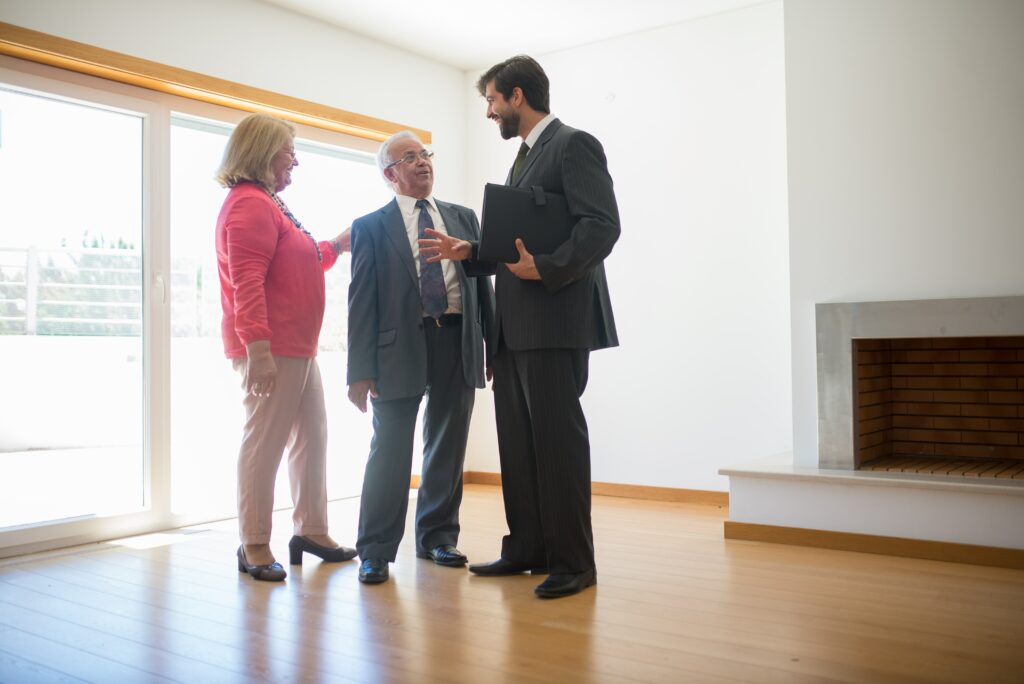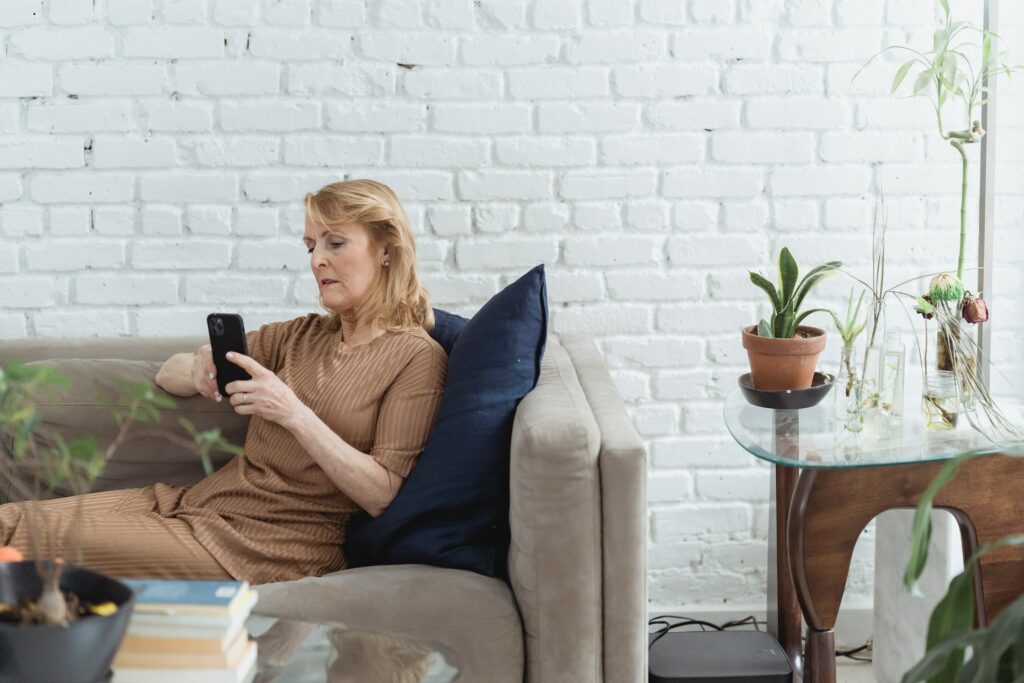The Must-Do Aging-in-Place Home Modifications
By adapting the space to meet the needs for better accessibility, aging-in-place remodeling helps homeowners to stay in their homes as they age or when living with a chronic condition.
So that as they age, older baby boomers can keep their independence, comfort, and safety. One of the biggest benefits of upgrading a home for older people is improving their quality of life.
Continue reading to view our recommended house improvements based on universal design concepts and trusted sources if you want to learn more about making your home more aging-friendly.
Read also: Aging In Place: A Guide To Everything You Need To Know
What is Universal Design – and Why Is It important?
According to the website of the Centre of Universal Design, universal design is the process of creating an environment that is as accessible, understandable, and usable for everyone as feasible, regardless of their age, size, aptitude, or disability.
The website continues by stating:
“An environment (or any structure, item, or service in that environment) should be created to accommodate all users’ needs. This is not a unique requirement that only benefits a small portion of the populace. It is an essential requirement for good design.
This means that making house adaptations for an older family member utilizing universal design can be advantageous to you and your family.
Common Aging-In-Place Home Modifications
Entryways Modifications
For elderly persons who prefer to age in place, a home’s entryways are especially important because they control access to the property. Many times, there are steps at the property entrances as well, which is never safe for the elderly. Access ramps and non-skid flooring are two entryway improvements that require a lot of time and money.
Recommendations:
- Ensure that at least one entryway is completely covered and has no steps.
- Doorways and hallways also need to be wide enough to accommodate wheelchairs.
- Electrical cords should be secured to the wall and coiled to remove any slack.
- Replace knobs with levers to avoid any difficulty caused by arthritis or other aging problems.
- Lower the doorbell from its standard location to accommodate people with difficulty raising their arms.
- Throw rugs—a common culprit in senior falls—should be discarded completely in the entryway, while floor runners and other drugs must be fastened down.
- Doorways should be at least 32-36 inches let wheelchairs pass through.
- Ideally, hallways would be 36 to 42 inches wide.
- As a minimum anti-slipping precaution, exterior steps should have non-slip rubber treads or tape.
- For steps to be visible, there needs to be enough illumination.
- There should be a raised area in the entryways that is approximately waist level. It will be helpful if you carry something to keep your hands free.
- Make the area around the entrance more well-lit.
Did You Know
At age 65, around 33 percent of the light that enters a young adult’s retina reaches the retina of an adult, and this percentage decreases to approximately 20% by the time an individual reaches age 85.
Kitchen Modifications
Seniors may discover as they age that their worktops and cupboards are too high, their appliances are no longer in the best places, and they are in a wheelchair. To make it simpler to access from a seated position, professional contractors may need to come in and lower the sink and modify the counter height. Furthermore, placing microwaves on microwave stands rather than at the back of the counter or in raised microwave cabinets makes things simpler for seniors still in their homes.
Recommendations:
- Choose from various solid flooring choices for older adults, such as cork flooring options like hardwood, luxury vinyl tiles, or vinyl. Consider purchasing extra-squishy anti-fatigue mats as a more cost-effective alternative to be gentle to your knees and feet while minimizing more stress on your joints.
- Think of a lighter countertop so you won’t be concerned about tripping over sharp edges because you weren’t looking for them. Using brighter hues will also make spills easier to see as they happen (and possibly prevent you from slipping and falling).
- Install wall outlets within backsplashes or beneath cabinets to eliminate the need to bend over, which could lead to a fall.
- Under-cabinet lights can help dark workspaces to be illuminated. To ensure that everyone at home has the proper illumination regardless of when or where they choose to work, you can add a task or track lighting.
- Ensure the kitchen has an accessible thermostat so that the temperature can be quickly changed if there is a lot of cooking.
- Replace all kitchen door handles with loop handles or D handles, which have a D shape.
- An “aging in place” home should have upper cabinets that are about 3 inches lower than normal.
- Countertops are typically 36 inches high; adding a level of 30 inches will allow space for those who would rather sit than stand.
- Color-coded countertop edges provide a visual cue that can assist in preventing accidents. Install surfaces with rounded edges and corners.
- Put your refrigerator, sink, and oven as close to one another as possible.
- Ensure the sink has an anti-scald device and is around 6 inches deep. Think about adding a pullout sprayer or a hands-free faucet.
Shower and Bathtub Modifications
A senior who chooses to age in place should consider making bathroom changes, especially to the bathtub. A walk-in shower is an alternative to a bathtub since it allows for much easier (and safer) access and departure than a bathtub. A walk-in bathtub can be installed in place of a conventional bathtub as a second bathroom renovation option.
Recommendations:
- Make sure bathrooms are on the first floor.
- Replace the step-in tub with a walk-in one.
- If there is enough space, consider putting a non-slip chair in the tub.
- In the bathroom, use non-slip mats or surfaces.
- Install railings next to the toilet, tub, and shower.
- Install removable or adjustable head showers.
- Adjust or make the sink counter a little lower than average for someone using a wheelchair.
- Widen the bathroom door to accommodate a wheelchair or a walker.
- Consider installing sensor lights and lower vanity lights.
In addition, Dr. Leipzig advises decreasing the bathroom water temperature to 120 degrees Fahrenheit. Most thermostats are set to 140 degrees automatically, which presents a scorching risk for some older people with vision and mobility impairments.
Dr. Leipzig is the author of the upcoming John Hopkins Health book Honest Aging.
Living Room Modifications
Even larger rooms, like the living room, can be dangerous for elderly individuals, particularly if they have mobility issues. An issue could be caused by anything as simple as an end table that blocks a wheelchair or an area rug that catches the leg of a walker. Thankfully, there are ways to stay clear of these hazards.
Recommendations:
- Make sure you have a straightforward area with enough space to move around and to get anything you require.
- The National Association of Home Builders recommends leaving a five-foot by five-foot clear space in the center of the living room.
- When remodeling your living room, take into account the room’s layout.
- Think About Installing Grab Bars in Your Living Space.
- Choose low-pile carpet if you decide that harder flooring isn’t for you and choose hard flooring instead, which is easier to clean and decreases the chance of tripping.
Bedroom Modifications
Planning to prevent hazards in the bedroom may be low on your list of priorities because it is a place for rest and comfort. However, since you spend a lot of time in your bedroom, you should make the same preparations for a secure, comfortable bedroom as you would for any other area in your home if you want to age in place successfully.
Recommendations:
- The ground floor is the best place for bedrooms, but if you have bedrooms on another floor level, consider getting a house stair lift.
- Remove all area rugs and throw rugs because, as health professionals point out, they pose an environmental danger that puts seniors at risk for falls and the injuries they cause.
- Stay away from bed skirting and all-floor-length bedspreads, comforters, and duvets.
- Installing the proper bed rails for you should be considered.
- The Rensselaer Polytechnic Institute’s Lighting Research Center (LRC) advised choosing touch-activated lighting, motion-activated lighting, nightlights, and toggle or rocker-style light switches with glow-in-the-dark knobs for bedrooms.
Ramps Installation
For older persons who use wheelchairs, have balance issues, or are unstable on their feet, installing ramps is a crucial home modification that is well worth the expenditure to provide them with more independence. Licensed builders construct and install proper height and elevation ramps for senior citizens.
Recommendations:
- The ramp climbs one inch for every 12 inches of its run, according to the ADA’s recommended slope of 1:12.
- Each ramp segment’s climb, which should always be at most 30 inches, determines how long it is.
- Landings should have the same width as the ramped segments and be at least five feet long.
- A ramp should have a minimum width of five feet, giving you enough to turn around.
- The ramp surface must be solid, firm, and slip-resistant in every condition.
- To prevent someone from being blinded at night, install low-voltage lighting along the ramp’s sides.
10 Charities That Help With Home Repairs
Home repairs are never enjoyable, but they may be expensive and frequently essential for anyone who lives in an older house. However, some organizations provide financial aid to homeowners looking for assistance in improving the accessibility or comfort of their houses.
So here are some of the charities that can help you with these home repairs:
- Home Repairs Ministries – aids low-income widows, single moms, pensioners, and disabled persons with necessary housing repairs and upgrades.
- Habitat for Humanity – is a nonprofit company that constructs homes for low-income families since they cannot afford to do it themselves. They also provide homes with repair assistance. Volunteers, typically residents of the neighborhood where the house is being built, make the repairs.
- Rebuilding Together – a top national NGO for secure and wholesome housing. They have been performing the assigned mission for approximately 40 years.
- Operation Homefront – a national 501(c)(3) nonprofit that aids in creating military families that are strong, secure, and stable.
- Catholic Charities of Southern Missouri – a top provider of services for repairing and rebuilding homes.
- Hearts & Hammers – a nonprofit that provides home repair assistance to residents in the twin cities of Minnesota and Dallas, Texas.
- Rebuilding Together Baltimore (RTB) – assists elders and individuals with disabilities who are low-income homeowners with repairs and modifications.
- Coalition for Home Repair -the leading nonprofit organization that supports and promotes partners in house rehabilitation and repair around the country.
- Women Under Construction Network – a nonprofit empowering woman of all ages dealing with pressing domestic problems. They also provide a repair program called “Repair Angels.”
- Home Seniors – offers seniors on low incomes both affordable housing and housing support services.
- Section 504 Home Repair program -gives grants to aged, very low-income homeowners to reduce health and safety risks or loans to very low-income homeowners to repair, upgrade, or modernize their homes.
US GOVERNMENT SUPPORTS
Weatherization Assistance Program (WAP): offers free weatherization services to homes.
Low Income Home Energy Assistance Program (LIHEAP): Bill payment assistance and emergency services in the event of an energy emergency, such as utility shutoffs.
Home Equity Loans: a type of credit where you can borrow money using the value of your house as security. It can cover significant costs like education, medical expenses, and home maintenance.
Rural Housing Repair Loans and Grants program: gives very low-income homeowners loans and grants to repair, upgrade, modernize, or eliminate health and safety risks in their rural homes.
8 Simple Ways to Incorporate Universal Design
The National Association For Home Builders provided 8 simple ways that you may follow to incorporate in your homes, even for starting families.
- Including grip-friendly knobs will make it simpler to open drawers and doors.
- putting in simple-to-operate windows
- widening doors to make them easier to maneuver (whether for a wheelchair or carting playpens from room to room)
- installing adequate illumination within the apparatus to improve visibility
- Adding nightlights to boost visibility or installing duplex outlets with light switches in corridors so people can plug in a vacuum without stooping
- adding contrast-oriented hues, especially for difficult places like countertop edges and wall corners
- Making equipment more easily accessible, such as microwaves, and avoiding positioning them above hot areas like the range
- Use sliding or barn doors for closets and bathrooms that may remain open without obstructing space.
Bottomline
Everyone ages, but you can prevent some of the worst negative effects aging can have on your quality of life by taking the necessary steps to ensure that you can age in place. To successfully age in place, you must make your house accessible and safe in every way, including the entry and departure points. To guarantee that you, your family, and your friends will be able to access your house for years to come, start developing a strategy immediately.






